Third Eye Piercing: Process, Cost, Jewelry, Pain, And Risks
Unleash your style potential and mystical elegance with this unique piercing.
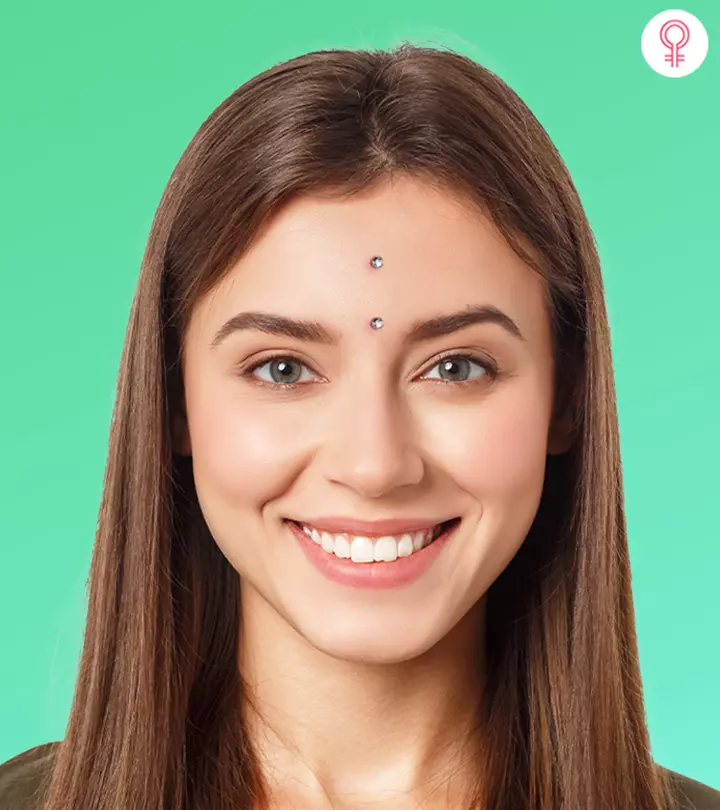
Image: StyleCraze Design Team
If you pay attention to piercing trends, you will know that the third eye piercing is slowly creeping up the popularity charts. Just to clarify, this third eye has no connection to bringing you enlightenment or extra vision but can render you a visionary in the field of fashionable piercings. Enter the world of avant-garde body modification with the unique and captivating third eye piercing, also known as the unicorn piercing or bindi piercing. This piercing involves placing the jewelry between the eyebrows, symbolizing enlightenment and inner vision, adding a touch of mystique and individuality to one’s appearance. Beyond its aesthetic appeal, delving into the process, cost, jewelry options, pain level, and associated risks becomes essential for those considering this bold fashion statement. In this comprehensive article, we will navigate the intricacies of third eye piercing. Read on to embark on this transformative journey, where artistry meets symbolism, creating a unique expression of personal style and spirituality.
 Piercing Guide: Third Eye Piercing
Piercing Guide: Third Eye Piercing- Placement: Above the bridge of the nose, vertically between the eyebrows
- Best Jewelry: Studs, hoops, or dermal implants
- Cost: $50 to $100
- Pain Level: High
- Healing Time: 6 to 12 months
In This Article
Process Of Third Eye Piercing
View this post on Instagram
A third eye piercing is a relatively rare and unconventional body modification among all types of piercings. It involves piercing just above the bridge of the nose, vertically between the eyebrows. Here is an overview of the process:
- Consultation: Before getting any piercing, it is crucial to consult with a professional piercer. They will assess your anatomy to determine if you are a suitable candidate for the piercing and discuss any potential risks or complications.
- Choosing A Piercer: Look for a reputable piercing studio with experienced piercers who follow proper hygiene and safety protocols. Ask for recommendations from friends or research online reviews to find a trusted piercer.
- Preparation: Once you have chosen a piercer, schedule an appointment. Before the piercing, make sure you are well-rested, hydrated, and have eaten a proper meal to reduce the risk of fainting.
- Sterilization: The piercer will thoroughly clean the area around your nose with an antiseptic solution to minimize the risk of infection. They will also sterilize the piercing needle, jewelry, and any other tools used during the procedure.
- Marking: Using a surgical pen, the piercer will mark the precise location where the piercing will be placed. This step ensures accuracy and symmetry.
- Piercing: When you are ready, with your consent, the piercer will use a hollow needle to create a vertical hole in the middle of your eyebrows. The needle will be inserted from the bridge of the nose and get to the forehead. the top down.
- Inserting Jewelry: Once the hole is created, the piercer will swiftly insert the chosen jewelry into the piercing. They will ensure that the jewelry fits properly and sits flat against your skin.
Now that the process has been outlined, the logical follow-up is figuring out where on the pain level scale this piercing lies. Find this out in the next section to prepare yourself for the experience.
Key Takeaways
- The third eye piercing process involves consultation for suitability, hygiene maintenance, and sterile equipment use.
- The cost of a third eye piercing varies from $50 to $100, influenced by factors like studio location, piercer expertise, and jewelry preferences.
- Healing time for third eye piercings varies from 6 to 12 months, requiring diligent aftercare to prevent complications.
- Some risks of third eye piercings include infection, migration of jewelry, and tissue damage.
Does A Third Eye Piercing Hurt?
View this post on Instagram
The pain level of a third eye piercing varies depending on individual pain tolerance and the skill of the piercer. Typically, any piercing involves some discomfort due to the penetration of the skin and underlying tissue. However, since the third eye piercing is placed on the forehead, an area with less flesh and more bone, some may experience intense pain as compared to other piercings.
Kendriyan (Ken), a YouTuber, recorded herself getting her third eye piercing. Regarding the pain she said, “It wasn’t as bad as getting the tattoo behind my ear.” When done and asked about how she felt, she said, “I feel great! It looks pretty! That was so different (i)!”
But worry not! If proper care is taken, this type of piercing heals in no time! Read on for the duration required for optimal healing, ensuring a smooth transition into flaunting this distinctive piercing.
How Long Does The Third Eye Piercing Take To Heal?
View this post on Instagram
While the healing time for a third eye piercing varies from person to person, it typically ranges from 6 to 12 months. During this period, it is essential to follow proper aftercare instructions provided by the piercer to ensure optimal healing and reduce the risk of complications. Factors such as individual healing abilities, lack of adherence to aftercare routines, and any potential complications can influence the healing timeline.
 Did You Know?
Did You Know?Well, for the proper healing of body piercings, you need to take good care of it. Below are some essential considerations and aftercare tips to ensure your new piercing maintains its appearance and remains healthy.
Third Eye Piercing Aftercare
View this post on Instagram
Below is a list of points for aftercare of and cleaning a third eye piercing:
- Clean the piercing twice a day with saline water, preferably in the morning and before bed. This may help reduce inflammation and promote healing.
- Always wash your hands thoroughly with antibacterial soap before touching the piercing.
- Gently pat the piercing with a gauge dipped in saline solution for a few minutes to help loosen any dried discharge. You can even use any gentle, fragrance-free soap recommended by your piercer (1).
- Avoid rotating the piercing while cleaning to prevent it from scratching the raw skin.
- Avoid using alcohol, hydrogen peroxide, or harsh chemicals on the piercing as they can irritate the skin.
- After cleaning, pat the area dry with a clean paper towel or gauze. Avoid using cloth towels that may harbor bacteria or leave fabric residue.
- Try to minimize touching or playing with the piercing to prevent irritation and infection.
- Keep makeup, hair products, and other cosmetics away from the piercing to prevent contamination.
- Avoid swimming in pools, lakes, or hot tubs until the piercing is fully healed to prevent infections (2).
Like any piercing, third eye piercings carry certain risks and potential side effects. Check them out in the next section for a holistic understanding of what you are opting for.
Side Effects Of Third Eye Piercings
View this post on Instagram
Third eye piercings may come with significant risks, some of these potential side effects include:
- Risk Of Infection: Like any piercing, a third eye piercing can become infected if not properly cared for. This can lead to excessive pain, swelling, redness, and discharge from the piercing site (3).
- Migration And Rejection: The body may see the piercing as a foreign object and attempt to push it out, leading to migration or rejection. This can cause discomfort and may result in the piercing needing to be removed (4).
- Damage To Surrounding Tissue: Improper piercing techniques or placement can cause damage to the surrounding tissue, nerves, or blood vessels, leading to pain or complications (4).
- Vision Impairment: Depending on the placement and size of the actual piercing, there is a risk of it obstructing vision or causing irritation to the eye.
- Scarring: Scarring is a common side effect of piercings, including third eye piercings. Improper care or healing may result in more pronounced scarring.
- Headaches: Some individuals may experience headaches or migraines as a result of the piercing, especially if there is pressure on certain nerves or blood vessels in the area.
- Allergic Reactions: Allergic reactions to piercing jewelry, especially if it contains nickel or other allergens, can manifest as itching, redness, or swelling (5).
- Keloids: People with a tendency to develop keloids may be at risk of excessive scar tissue formation around the piercing site, leading to raised and sometimes painful bumps (6 ).
- Psychological Effects: Some individuals may experience psychological effects such as anxiety or discomfort due to the visibility of the piercing or societal perceptions.
- Long-Term Consequences: While many side effects may resolve with proper care and healing, anecdotal evidence suggests that there can be long-term consequences such as scar tissue formation, altered sensation, or changes in appearance around the forehead piercing site. This is because it is a surface piercing and they may take as long as 9 months to 2 years to heal completely.
If you remain undeterred and are considering this dermal piercing, selecting the ideal piece of jewelry is essential to complete the look. Fortunately, there is a wide range of options available to suit your personal style and preferences. Scroll down to learn more!
Types Of Jewelry Used For Third Eye Piercings
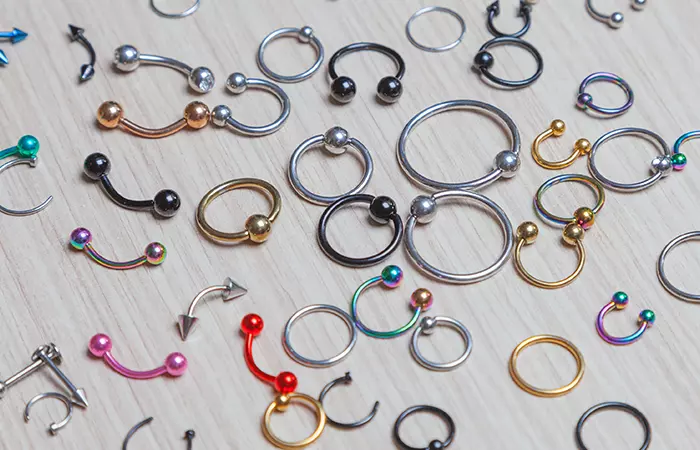
Here are some types of jewelry commonly used for this type of piercing:
- Studs: Ideal for a subtle and understated look, studs are a common choice for third eye piercings. They are available in various sizes and designs, allowing for customization according to individual preferences.
- Surface Bars: They are perfect for piercing done on flat surfaces, like between the eyebrows. Also, this type of jewelry does not put much pressure on the piercing site and thus, carries less risk of jewelry migration or rejection.
- Curved Barbells: They are an excellent choice for third-eye piercing and any type of surface piercing. They have a slightly curved shape and provide a comfortable fit.
- Dermal Anchors: Dermal anchors are favored by those who want to make a statement with their third eye piercing. These bases are inserted beneath the skin, creating the illusion of a raised jewel or decorative element, thereby adding a distinctive and awe-inspiring feature to the piercing.
When choosing jewelry for your third eye piercing, consider the following tips:
- Material: Opt for high-quality materials such as implant-grade titanium, surgical stainless steel, gold or rose gold, or niobium to minimize the risk of allergic reactions and promote healing (7).
- Size: Consult with your piercer to determine the appropriate length and gauge size for your third eye piercing, ensuring a comfortable fit and reducing the risk of migration or rejection.
- Style: Select jewelry that reflects your personal style and complements the shape and size of your third eye piercing. Whether you prefer simple and understated designs or bold and ornate embellishments, choose jewelry that makes you feel confident and empowered.
When it comes to changing your third eye piercing jewelry, it is essential to wait until the piercing is fully healed, which typically takes 6-8 weeks or longer. Follow these steps to safely change your jewelry:
- Clean Hands: Wash your hands thoroughly with antibacterial soap to minimize the risk of infection before handling your piercing or jewelry.
- Soak: Soak the area around your third eye piercing with a saline solution or warm water to soften any crust or debris and reduce discomfort during jewelry removal.
- Remove Old Jewelry: Carefully unscrew or unclasp the ends of your current piercing jewelry using clean hands, taking care not to force or tug on it. Gently slide the jewelry out of the piercing.
- Insert New Jewelry: Align the ends of the new jewelry with the piercing and carefully thread or slide it into place, ensuring a secure and comfortable fit. Double-check that the jewelry is properly seated and the ends are securely fastened. However, remember that if you have a dermal anchor, it can’t be changed. Always consult a piercer in case you are thinking of changing the dermal top. Never attempt to do it on your own.
- Cleanse: After changing your jewelry, cleanse the area around your third eye piercing with saline solution to remove any remaining debris and promote healing.
 Quick Tip
Quick TipNow that you understand all about the procedure, the risks and the kind of jewelry you should opt for, it is essential to explore the associated costs to make an informed decision about this type of piercing body modification.
Cost Of A Third Eye Piercing

The cost of a third eye piercing typically ranges from $50 to $100, depending on various factors such as the piercing studio’s location, reputation, and expertise of the piercer. Additional costs may include the price of jewelry, which will also vary based on the material and design preferences. Meet with your piercer prior to scheduling your appointment to better budget your resources.
With proper care and consideration, the third eye piercing can become not only a striking fashion statement but also a profound symbol of inner enlightenment and personal empowerment. Whether you are getting it for cultural significance or its aesthetic allure, this avant-garde form of body modification demands meticulous aftercare. Moreover, due to its unique position, this piercing also comes with substantial risks such as infection, migration, tissue damage, and headaches. We hope that this article has helped you navigate all the aspects of third eye piercings and helped you make an informed decision before you embark on a transformative journey where inner vision meets outer adornment.
Frequently Asked Questions
What steps should I take if my third eye piercing gets infected?
If your third eye piercing gets infected, clean it gently with saline solution twice daily, avoid touching it, and consult a professional piercer or doctor for proper treatment suggestions.
Can anyone get a third eye piercing, or are there specific requirements?
There are some requirements to keep in mind, which if met can make you eligible for one Third eye piercings require a precise understanding of anatomical differences and careful placement by an experienced professional, due to the proximity to sensitive areas like the forehead and potential risks to nerves and blood vessels. Hence, consult with a skilled piercer who specializes in surface piercings for personalized advice and to determine if you are a suitable candidate.
Do third eye piercings leave noticeable scars once removed?
Third eye piercing holes may stay as noticeable scars upon removal, especially if the piercing was in place for an extended period, or experienced severe complications during healing.
Can a third eye piercing be easily removed or reversed?
Removing a third eye piercing typically involves professional assistance due to its placement and potential for complications; reversal may result in scarring or require cosmetic procedures, depending on individual healing and scar tissue formation. Consult with a skilled piercer or medical professional for safe removal and potential reversal options.
Are there any alternative piercings that mimic the appearance of a third eye piercing?
While there are no exact alternatives, surface piercings like dermal implants or microdermal piercings placed on the forehead can create a similar aesthetic; consult with a professional piercer for personalized suggestions based on your preferences and anatomy.
Embark on a mesmerizing journey through the top 50 best third eye piercings! From delicate studs to intricate designs, discover the epitome of piercing artistry and feel inspired to try. Watch now and explore the endless possibilities!
Personal Experience: Source
StyleCraze's articles are interwoven with authentic personal narratives that provide depth and resonance to our content. Below are the sources of the personal accounts referenced in this article.
(i) My third eye dermal experiencehttps://www.youtube.com/watch?v=yg6tYux6rSE
References
Articles on StyleCraze are backed by verified information from peer-reviewed and academic research papers, reputed organizations, research institutions, and medical associations to ensure accuracy and relevance. Read our editorial policy to learn more.
- Suggested aftercare for body piercings
https://safepiercing.org/aftercare/ - Infections acquired via fresh water: From lakes to hot tubs
https://journals.asm.org/doi/10.1128/microbiolspec.iol5-0019-2015 - Body piercing infections
https://www.ncbi.nlm.nih.gov/books/NBK537336/ - Body piercing troubleshooting
https://safepiercing.org/troubleshooting/ - Management of contact dermatitis due to nickel allergy: An update
https://www.ncbi.nlm.nih.gov/pmc/articles/PMC3047925/ - Hypertrophic scarring and keloids: Pathomechanisms and current and emerging treatment strategies
https://www.ncbi.nlm.nih.gov/pmc/articles/PMC3022978/ - Jewelry for initial piercings
https://safepiercing.org/jewelry-for-initial-piercings/
Read full bio of Eve Phillips
Read full bio of Pahul Nanra
Read full bio of Madhumati Chowdhury
Read full bio of Shreya Mukherjee






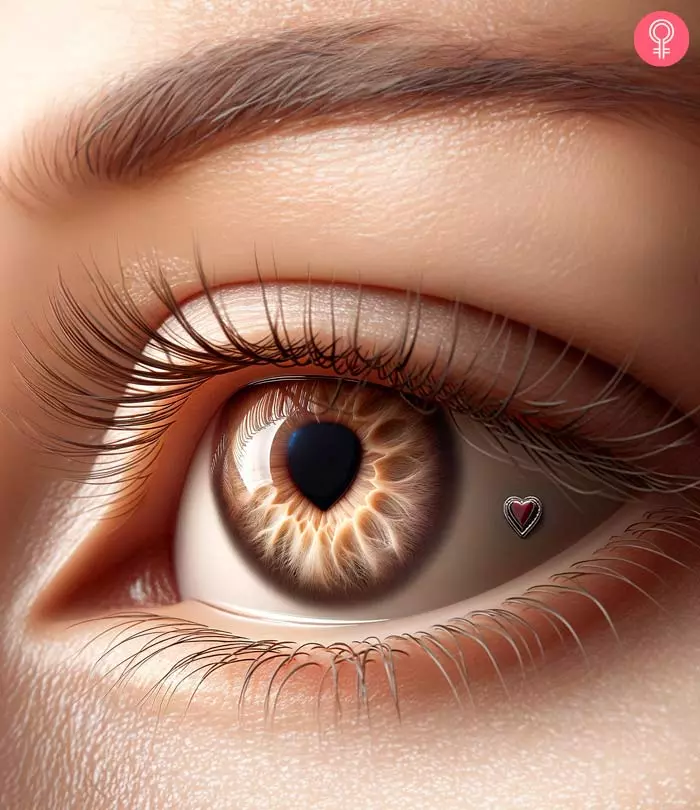
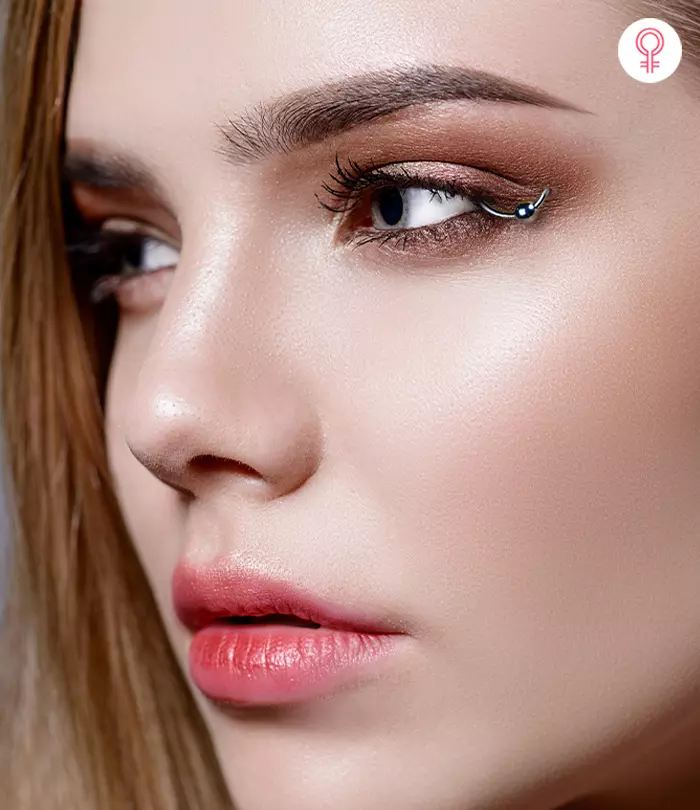
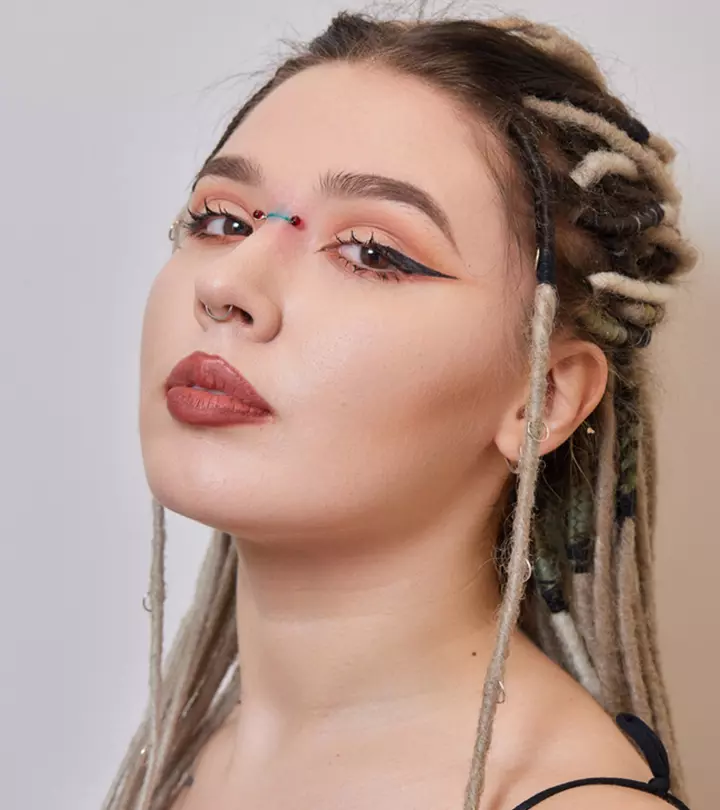
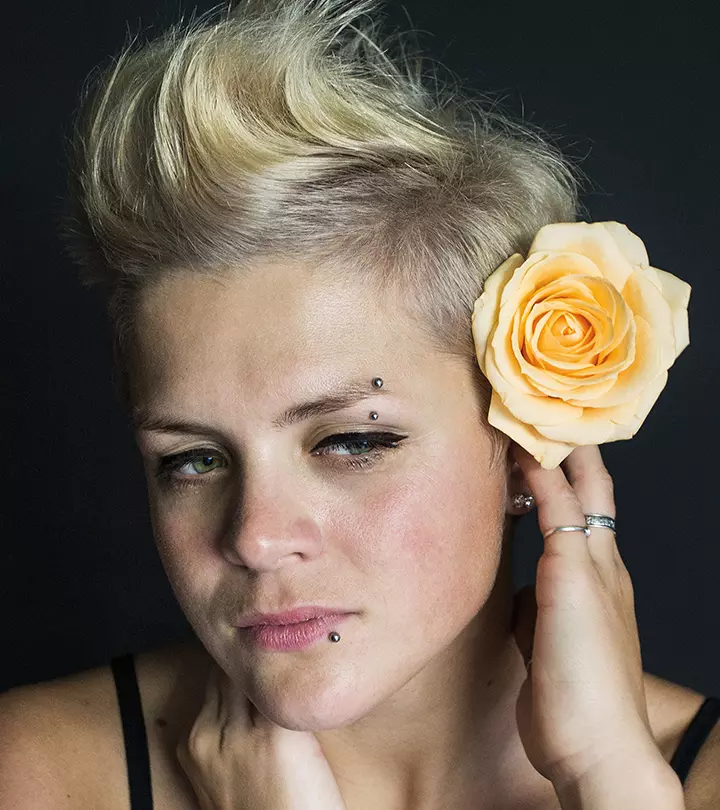
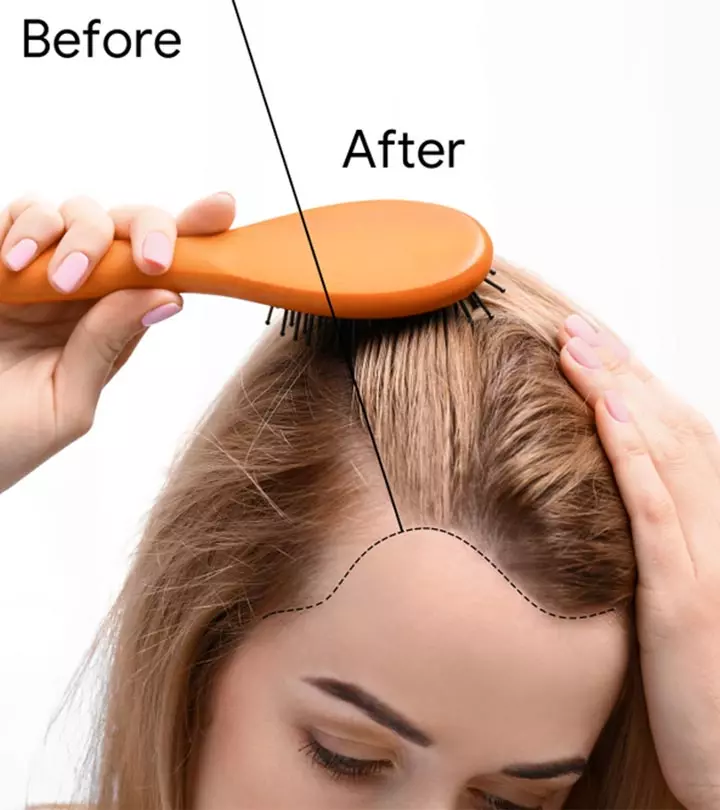
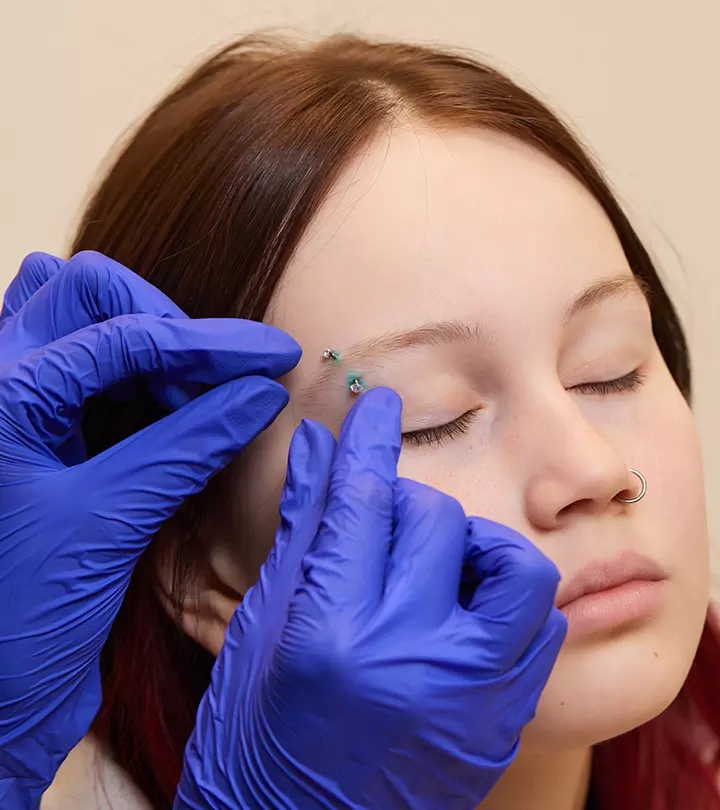

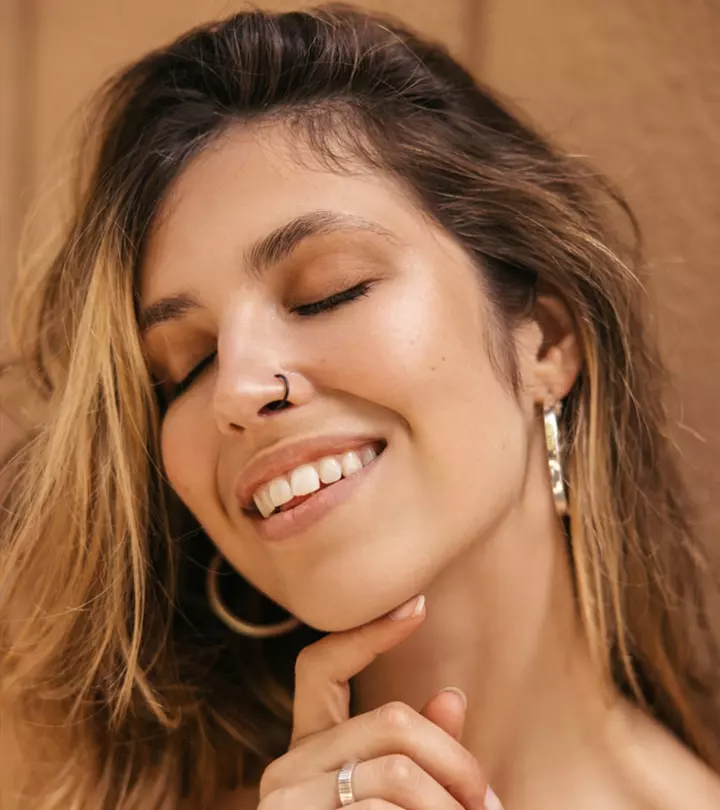
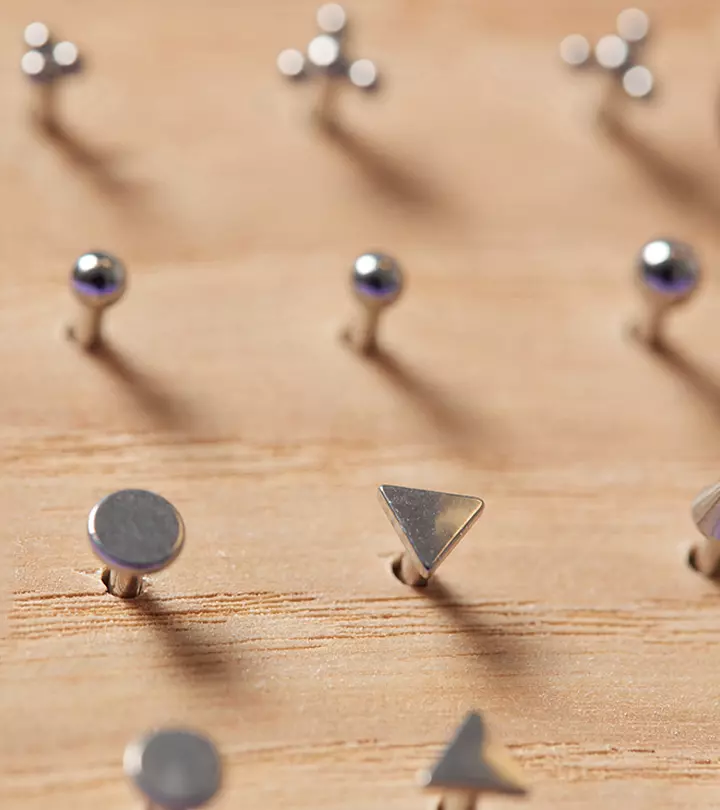
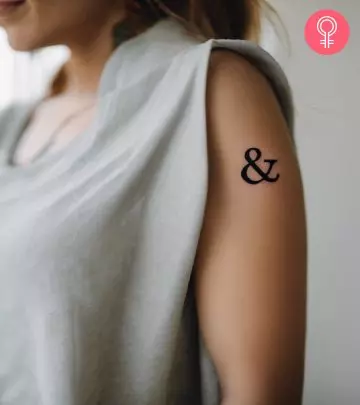
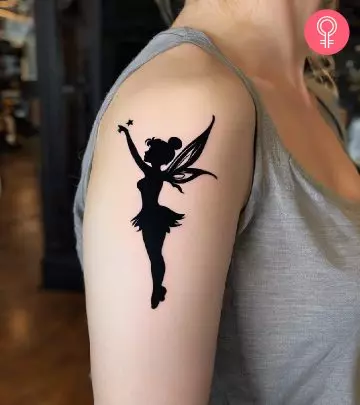
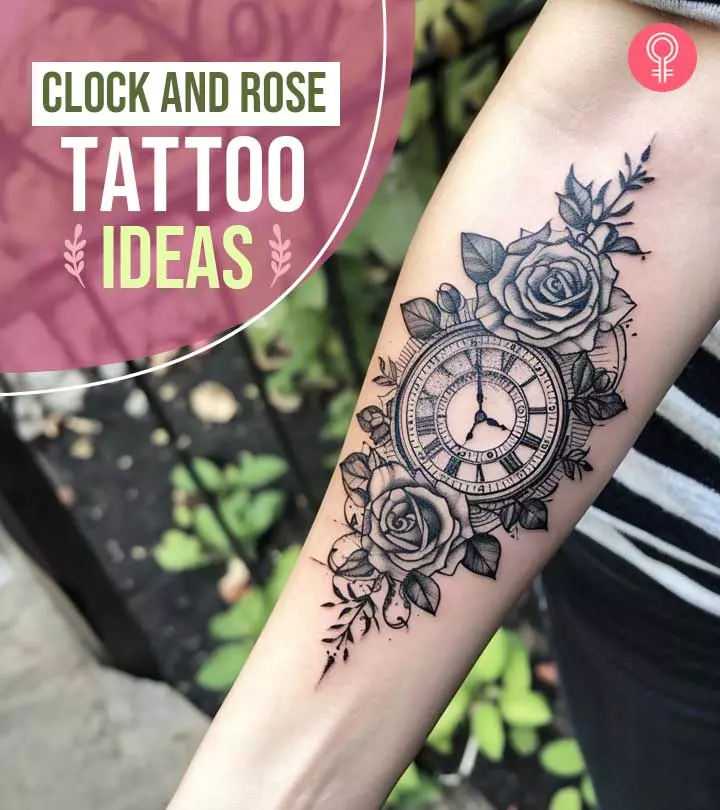
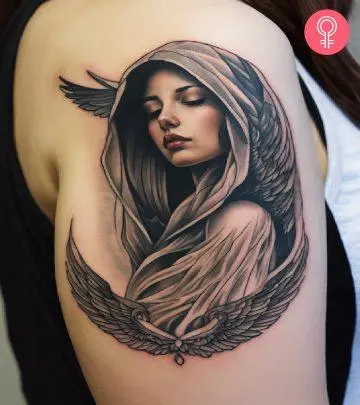

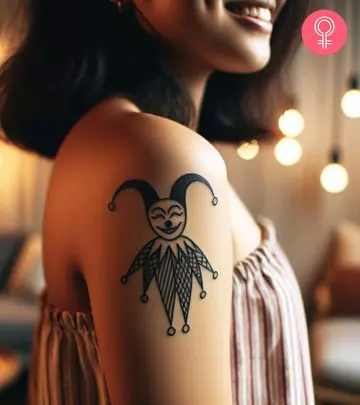
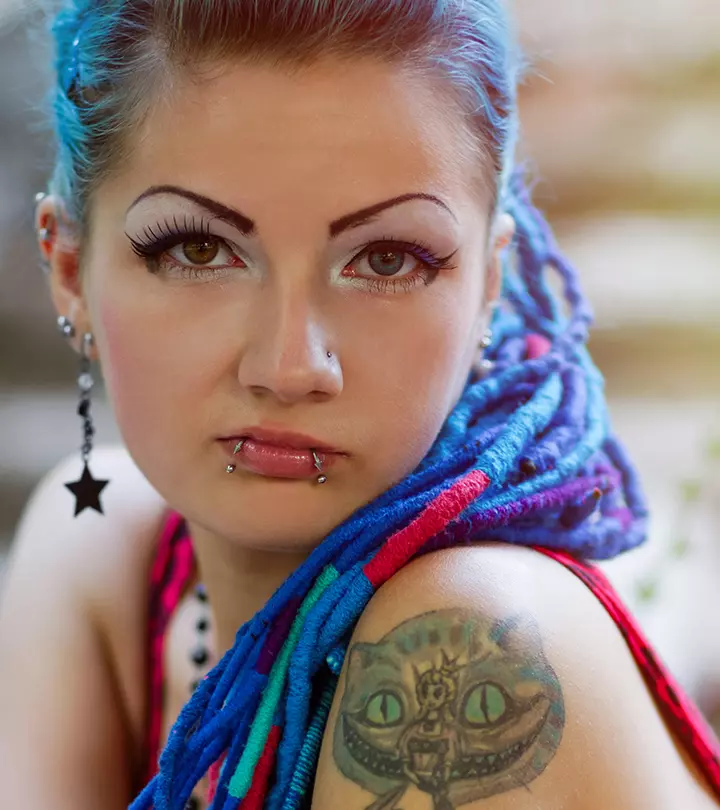

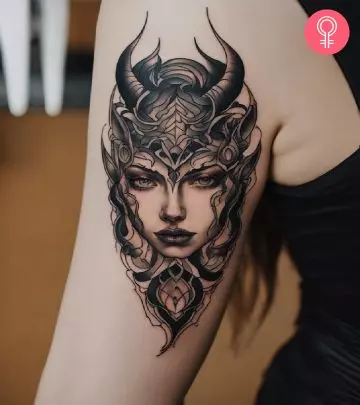

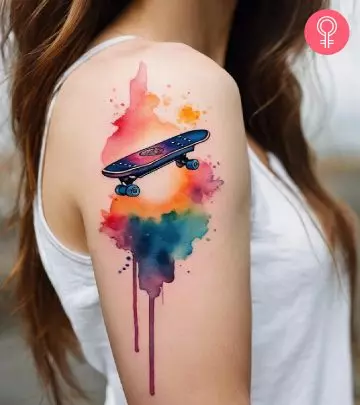
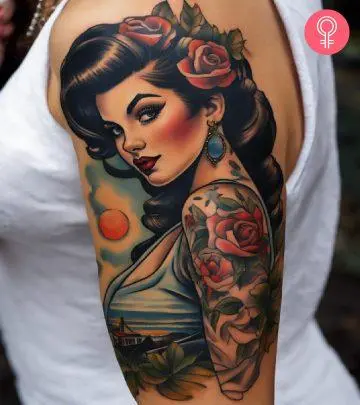
Community Experiences
Join the conversation and become a part of our empowering community! Share your stories, experiences, and insights to connect with other beauty, lifestyle, and health enthusiasts.